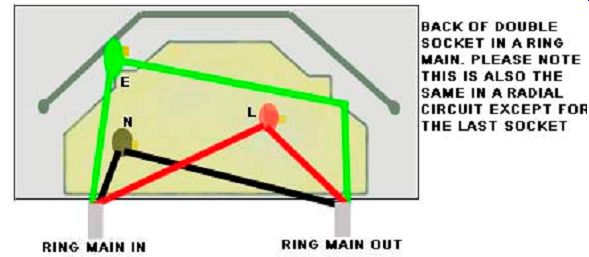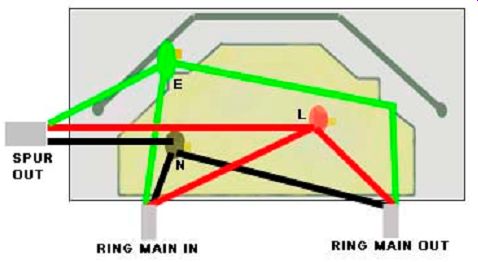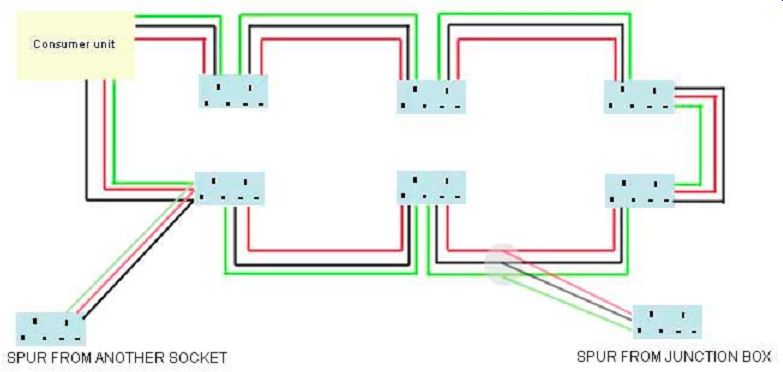wall socket
ADDING A SPUR TO AN EXISTING CIRCUIT
Part P of the new building regulations could involve a check on any additional circuitry by qualified electricians when you sell your home. This can affect your sale, you could be breaking the law and your house insurance may not be valid. Please be absolutely sure you know what you are doing and get all of your work checked by a qualified electrician.
Very often we find we do not have enough sockets at home. It is not a difficult job to add another but there are certain rules to follow.
A spur can be connected to an existing socket, on either a ring main or a radial circuit, providing that socket does not already have a spur. That is only one spur per socket is allowed and the number of spurs must not exceed the number of sockets. If this is necessary in any part of your home the only way you can do this is by adding another ring main or by extending one of the ring mains you have.
The spur must be connected to the existing circuit using the same cable as used in the main circuit. You can see how to wire a spur to an existing socket from the images below. The first image is how the back of your double socket should look and the second is the wiring for a spur. A general rule for a ring main is that if you only have two cables in the back of an existing socket then it is ok to spur...However, if you have a radial circuit with two cables coming in and out, this may be the last socket on that circuit and already has a spur.
Please check with a qualified electrician if you are not sure. If there are 3 cables coming out of any socket then it is not ok to spur.

--- A spur can be added to any part of the circuit providing the rules
above are followed. If there is not an existing socket near enough, you
can connect into the cable by means of a junction box for your new spur.


-----Junction boxes come rated for different uses by the amps they are
allowed to carry. A 30amp junction box should be used on a ring or radial
circuit feeding sockets only. The junction box must be fixed solidly to
a suitable surface and must not just "float around suspended by the
cables it joins.
The cables to and from any spurs you connect must be protected by a conduit of some kind; be it on the surface or buried in the wall. If you bury cables in the wall they must only run vertically, not horizontally. Cables may be placed in floor or ceiling voids but not amidst, or wrapped in, insulation where they may become too hot.
Please also check the rules very carefully for ring mains and radial circuits. You are limited in the length of cable you are allowed to use in both circuits and long spurs could make you exceed the limit. If this is the case you are asking the circuit to use much more energy than the circuit is designed for. More energy = more heat and cables can catch fire. Part P of the new building regulations could involve a check on any additional circuitry by qualified electricians when you sell your home. This can affect your sale, you could be breaking the law and your house insurance may not be valid. Please be absolutely sure you know what you are doing and get all of your work checked by a qualified electrician.
---------